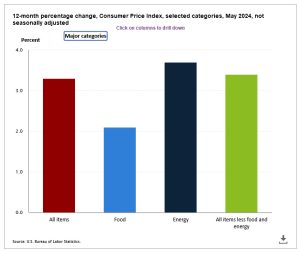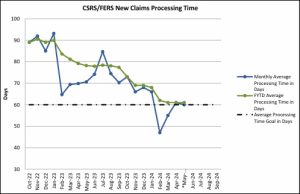Posted on Friday, 12th July 2024 by Dennis Damp
 Print This Post
Print This Post
Either you’ve been retired for some time and realize life’s challenges have taken center stage or you are an astute employee planning your retirement well in advance, a smart move. What seemed insignificant health issues in our 40s, 50s and 60s now tests our physical and at times mental abilities as time marches on.
Most come to realize their limitations as age catches up with us and reality takes center stage.

Benefits of Downsizing
According to the National Association of Realtors, sellers aged 69 to 77 were the most likely to downsize their homes for the following reasons:
- A smaller footprint to maintain and service
- Fewer steps and trip hazards to contend with
- Lower utility costs, real estate taxes, and insurance premiums
- Improved cash flow and less financial stress
- To be closer to family and friends
Many are overwhelmed by the process and procrastinate until it’s too late, others are proactive and explore their options well in advance of when they actually make their move.
The benefits can be out weighted by the added stress of getting this all done. However, it is essential in many cases just for health concerns, both emotional and physical. Another concern is that a surviving spouse won’t be able to handle the demands of a large home after the inevitable happens, that is one of my primary concerns.
To Move or Not to Move – That is the Question
Moving is a major life event and one not takin lightly. The stress and anxiety surrounding selling your existing home and a move leaves many distracted and sleep deprived, especially if you don’t identify and plan the many actions necessary to transport not only your belongings, but set up all the services needed at your new location. Then, you must decorate, hang blinds and/or curtains, paint, make needed improvements, change your address on all of your accounts, and so much more.
Thankfully, there are ways to ease into downsizing and reduce the stress with preplanning and forethought.
Decluttering – The First Step
Long before you start looking, it’s wise to go through your home, one room at a time and identify three categories for what you find: things to keep, giveaway, sell or donate. You will be amazed at what you and yours accumulated over the years and wonder where it all came from!
It’s too easy to hold on to what you have thinking I may need this down the road. If you gained or lost weight you have several sizes of cloths at the ready just in case you change direction AGAIN and go up or down on the scale.
When Mary and I sorted through our closets, I had work clothes I hadn’t worn in decades, outdated and out-of-style suits, shirts and pants that I finally sent to Goodwill for others to use. Mary found clothes with sales tags attached that were purchased years ago; they too were donated. The suits I kept required minor alterations, a friend referred me to a local seamstress.
I felt a sense of relief and accomplishment as I went through our house, garage and garden shed eliminating the unnecessary, irrelevant, and outdated distractions in our lives. I had tools that I’ll never use again that I either offered them to my son and friends or donated the items to a local church for their annual sale.
If you have furniture that you don’t need contact one of a dozen charities including Habitat for Humanity, the Salvation Army, Goodwill, and others that may take it off your hands. Local municipal waste management companies often have large item days where you can put the items at the curb on certain days of the month.
You can also call 1-800 Got Junk (1-800-468-5865); they will haul away just about anything for a fee that you can’t dispose of otherwise. We used them to pick up an old treadmill, office furniture, and a 1920s pedal powered singer sewing machine. They do all of the heavy lifting.
Even if you don’t move, this is a necessary step in retirement. This first step helps heirs settle an estate and it’s best if the clutter is gone and you’ve already distributed or identified family members to receive heirlooms and special sentimental items. Plus, an uncluttered household provides a sense of relief to those still living.
What’s Available
Finding a suitable home in your desired location such as a master bedroom on the first floor or a ranch for one level living can be a challenge. Most homes are multilevel in the Pittsburgh, PA area due to hilly terrain, there aren’t many wide flat lots available to build ranches. Myrtle Beach in South Carolina is a different story, the majority of their new homes are one story which is great for retirees for obvious reasons.
You can visit www.realtor.com, www.zillow.com, or www.redfin.com to search their home listings using filters for the desired features, price range, and locations. Visit frequently so you don’t miss out on a new listing.
Your best bet is to work with a realtor who can set up searches with alerts for the type and price range of homes in your area. They are intimately familiar with the areas they service and may know of new or soon to be listed properties before others discover they are available. It’s a highly competitive market and homes in many areas with first floor master suites go fast and aren’t generally on the market for extended periods unless they are overpriced or in subpar condition.
One word of caution, if you find a new or existing home by searching listings online, select a local realtor to represent you. Don’t rely on the listing agent who represents the seller!
You need someone on your side to help you negotiate the sale, provide needed resources, and to research and answer any questions you may have about the area and transaction.
When to Start Your Search
After you settle on a location, price range, desired home style and features, the earlier you start your search the better. It can take a few months to years to find the ideal property that meets all of your expectations. This will give you time to declutter and organize for the pending move.
Compromise is a constant in the real estate market unless you build to your specifications. It’s difficult finding a home with all of the desired bells and whistles. Be prepared for upgrades and remodeling projects; it’s best to remodel before you move in. Once you occupy the premise, it’s difficult working around contractor’s schedules that can interrupt your days for months-on-end.
Summary
When you start out looking for one-floor-living or at least a first-floor master, stick to your guns. It’s easy to get side tracked and give up on your quest, especially when an attractive property and offer comes along.
If you decide to purchase a home without the primary features you desire, you will more than likely regret your decision years later. I’m proof of that, we did this in 2012, the property we purchased had everything we wanted except a first-floor master that we definitely need today.
My local realtor, Craig Lalama, is with Re/Max and covers South Western, PA. He sends notices of all new listings with a first-floor master that meets our criteria, a good realtor can keep you focused and on track.
My wife and I are self-proclaimed experts in moving and decluttering, we moved 11 times in our 55 years of marriage including several cross-country relocations.
What type of property or services you need can dramatically change over time. It helps to be realistic and anticipate some of the frailties that may limit the type of home and location you are willing to accept. Some seek out independent senior living or 55+ communities. A viable option with many benefits including social networks, activities, no outside maintenance, assisted care if needed, and much more.
If you take the plunge and decide to downsize, identify acceptable locations, determine the square footage, number of bedrooms and baths, and type of home you desire. Inventory your home furnishings and other contents to ensure they will fit in your new space.
Carol, a friend from work, recently moved to a one-bedroom apartment in a local retirement community. She had boxes piled up in her bedroom for months. She didn’t realize how small her new apartment was in comparison to the condo she previously owned.
Kiplinger’s article titled, How Retirees Can Downsize in Today’s Housing Market, can help you navigate the higher mortgage interest rate environment we are facing today.
If you decide to downsize, start slow and discuss your wishes and concerns with your family and friends. Declutter, identify where you want to relocate to, type of home and features, and contact a realtor to help you along the way.
Helpful Retirement Planning Tools
- Financial Planning Guide for Federal Employees and Annuitants
- TSP Guide
- Budget Work Sheet
- 2024 Pay Tables
- Retirement Planning for Federal Employees & Annuitants
- The Ultimate Retirement Planning Guide – Start Now
- Deciding When To Retire – A 7-Step Guide
- 2024 Federal Employee’s Leave Chart
- Medicare Guide
- Social Security Guide
Disclaimer: The information provided may not cover all aspect of unique or special circumstances, federal regulations, medical procedures, investment, and benefit information are subject to change. To ensure the accuracy of this information, contact relevant parties for assistance including OPM’s retirement center.
Over time, various dynamic economic factors relied upon as a basis for this article may change. The information contained herein should not be considered investment advice and may not be suitable for your situation. This service is not affiliated with OPM or any federal entity. You should consult with a financial, medical or human resource professional where appropriate. Neither the publisher or author shall be liable for any loss or any other commercial damages, including but not limited to special, incidental, consequential, or other damages.
Posted in BENEFITS / INSURANCE, ESTATE PLANNING, FINANCE / TIP, LIFESTYLE / TRAVEL, RETIREMENT CONCERNS, SURVIVOR INFORMATION, WELLNESS / HEALTH
Comments (0)|  Print This Post
Print This Post












